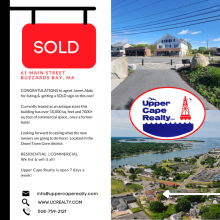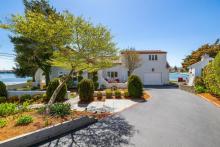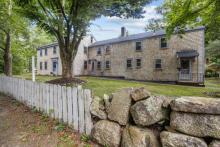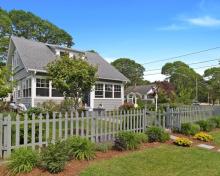Town Historian says goodbye to homemade boat
Town Historian Seth Mendell knows a thing or two about the past. He’s also a pretty good builder.
In 1964, when Mendell was teaching at Avon Old Farms School in Connecticut, he decided to build a boat—by the school library. Mendell, who spent summers in Mattapoisett working at the boat yard and alongside builder Alan Vaitses, got the idea while coming home from Trinity College in Hartford, where he was working on a Master’s degree in history.
“Trees were being timbered on campus,” Mendell says, “and one day I saw these great planks being shipped off to sell and I thought, ‘Hey, I could build a boat with those!’”
Thus began a six-year journey of building the Hekate, a 37-foot Meadow Lark ketch.
After a short discussion with the Avon headmaster and other higher-ups, Mendell began work turning a portion of the schoolyard into a boat yard. With the accessibility of the school’s carpentry and electrical shops the needed tools would be ready at hand.
Mendell, along with the help of friends and five graduating classes over the years, built the sailboat under a lean-to shelter. Though the roof of the shelter was latticework, snow and rain weren’t so much a concern—a large canvas covered the boat. Shade proved to be more valuable as the sun could cause the wood to crack. Due to the Hekate’s design it was partially constructed upside down. He says this allowed gravity to be on his side as heavy bottom planks were installed.
“Here I was,” Mendell says, “building this 37-foot boat, doing a Master’s degree, teaching full time, and having a family with small children. I was known as “Avon’s Noah” around campus. Many of the school clubs would have their yearbook pictures taken by the boat as it went along.”
There were, however, a few obstacles to overcome. The first of these was getting the boat turned over when it was time for deck construction. Mendell constructed two large wooden wheels attached to the hull and placed them in greased troughs. This allowed the boat to spin in place and, according to Mendell, was a technique used by the Egyptians. However, once the weight of the hull was off-centered it spun around so fast that the wheels smoked from friction.
Another major “post hole” (as he calls it) was melting the lead for the 18-foot keel. The Hekate needed 4,000 pounds of material, and though Mendell received most of it from St. Luke’s Hospital, melting it all down was a challenge. Using an old tub as a hearth, Mendell and Avon faculty waited seven hours for one ton of lead to melt and then be poured into a clay-covered mold. Tack that onto the snow and cold and wintertime as well.
The wait was over August 5, 1970. With an engine installed and the Hekate nearly complete it was time to hit the water. But how does one move a boat from midland Connecticut to the nearest body of water?
“This was before the hydraulic lifts,” Mendell explains. “I was fortunate enough to make friends with a house mover, so we used his rig and transported it to the Connecticut River. It stayed there for a year until we took it up to Mattapoisett to build the mast and booms.”
For the next thirty years the boat became a family heirloom and the toast of the town. It would often be transported from the water to his backyard during the offseason.
“It’s a tremendous feeling of accomplishment,” Mendell says. “It’s probably the greatest thing I’ve ever done. And to have it 40 years later is unbelievable.”
However, the Hekate is now up for sale at $13,500.
“It’s just too much work these days,” Mendell says. “I’m older and don’t have as much energy or pizzazz. Another thing is, you’ve got two older people out, and all you have to do is slip once and you’ve got a problem. It’s just time.”
So will he be building any more boats?
“I’ll just stick to kayaking,” he says, jokingly.















